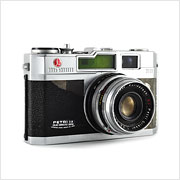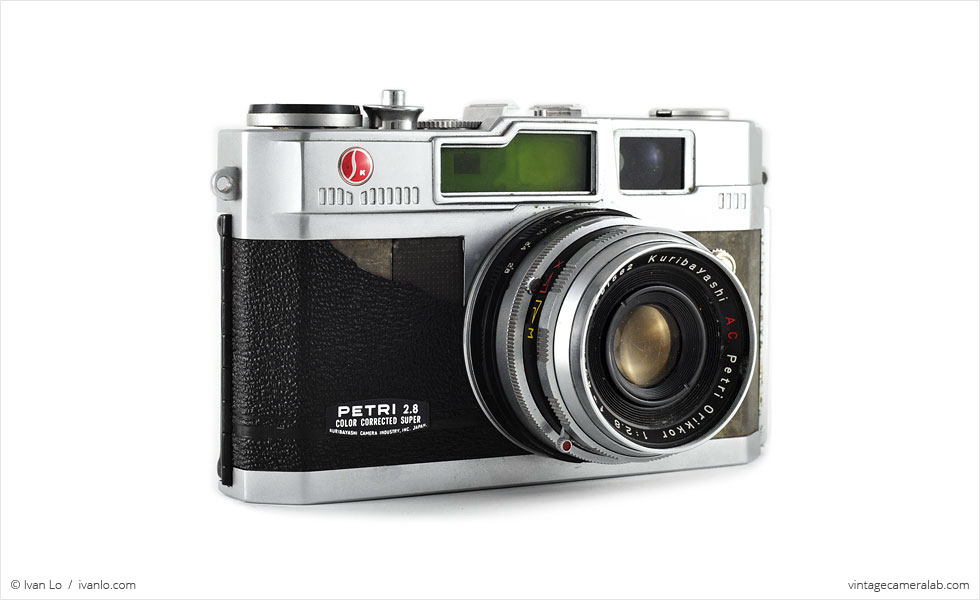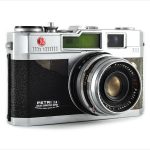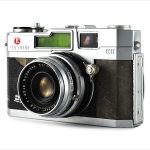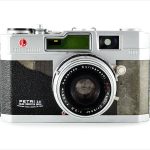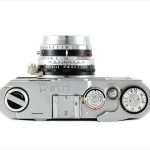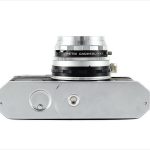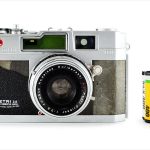Kuribayashi Petri 2.8 Color Super Specifications
| Manufacturer: | Kuribayashi Shashin Kogyo K.K. |
| Origin: | Japan |
| Made in: | Japan |
| Introduced: | 1958 |
| Type: | Rangefinder |
| Format: | 135 Film |
| Dimensions: | 13.4 x 8.3 x 7.2 cm |
Kuribayashi Petri 2.8 Color Super Reviews
The Kuribayashi Petri 2.8 Color Super is a fixed-lens rangefinder produced by Kuribayashi Shashin Kogyo K.K.. Confusingly, there doesn’t seem to be an “official” model number for this camera as it’s just one of many ambiguously named fixed-lens rangefinders made by Kuribayashi in the late ’50s and early ’60s. However, the well-known McKeown’s Price Guide To Antique & Classic Cameras identifies this particular model as the “Petri 2.8 Color Super” so, for simplicity’s sake, that’s what I’m going to call it here.
Within the Petri Color Super series are three variants differentiated by the maximum aperture of their 45mm Kuribayashi A.C. Petri Orkikkor lenses: f/1.8, f/1.9, f/2.8, the last one applying to this camera. Mated to the lens is a Petri Carperu MXV shutter capable of speeds ranging from 1 to 1/500 seconds and bulb. The self-timer can be found at the 8 o’clock mark on the lens barrel while the post at 4 o’clock can be used to sync an external flash unit. The protruding knob at the base of the lens barrel is used to aid focusing.
Coupled to the lens is a “GREEN-O-MATIC” rangefinder assembly hidden behind stylish green-tinted glass. The shutter button is located on the top panel between the film speed dial and the film advance lever with integrated frame counter. On the other side of the cold/accessory shoe is the film rewinding knob that can only be used when the small film rewind button on the bottom plate is depressed.
I confess, I bought this camera almost exclusively for the green rangefinder window. I don’t really know why it appeals to me so much but it does; I’m a complete sucker for little things like that. I had been watching eBay auctions for months before getting a great deal on this camera because it was missing a bit of leatherette and some kid wrote his name on the inside of the lens cap.
Find your very own Kuribayashi Petri 2.8 Color Super on eBay.
McKeown, James M. and Joan C. McKeown’s Price Guide to Antique and Classic Cameras, 2001-2002. (Grantsburg, WI, USA: Centennial Photo Service, 2001), p 402.
